The Frauenkirche in Dresden (originally the church of Our Lady - the name refers to the Holy Mary) is an Evangelical-Lutheran church of the baroque and the monumental monumental building of the Dresden Neumarkt. It is considered a magnificent testimony of the Protestant sacred architecture and has one of the largest stone church domes north of the Alps.
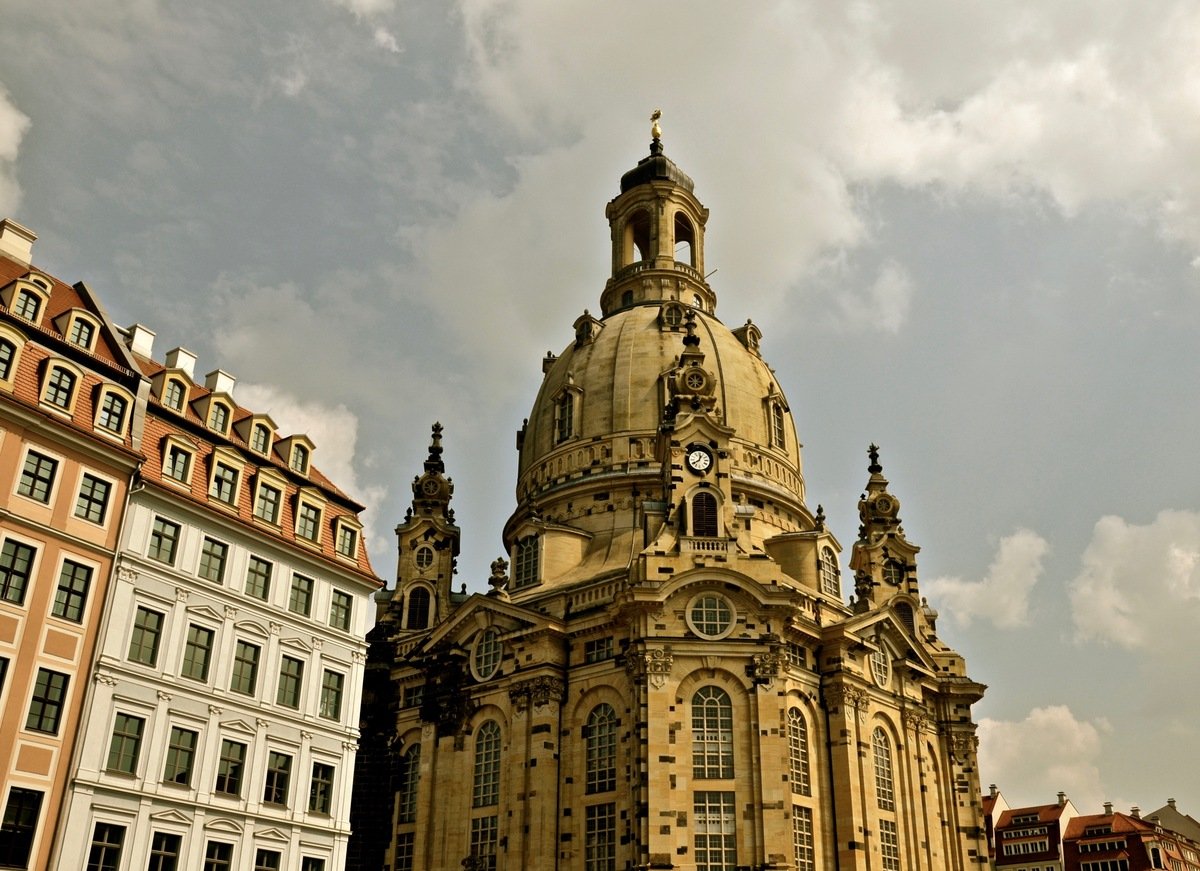
The Dresden Frauenkirche was built from 1726 to 1743 according to a design by George Bähr and became an emblem of the Dresden baroque as well as the famous city silhouette. In the air war of the Second World War she was severely damaged during the air raids on Dresden in the night of 13th to 14th February 1945 by the fire storm furious in Dresden and collapsed on the morning of the 15th of February burnt out. In the GDR, its ruins were preserved and served as a memorial to war and destruction. After the reunification in 1994, the reconstruction started in 2005, which helped support donor associations and donors from all over the world.
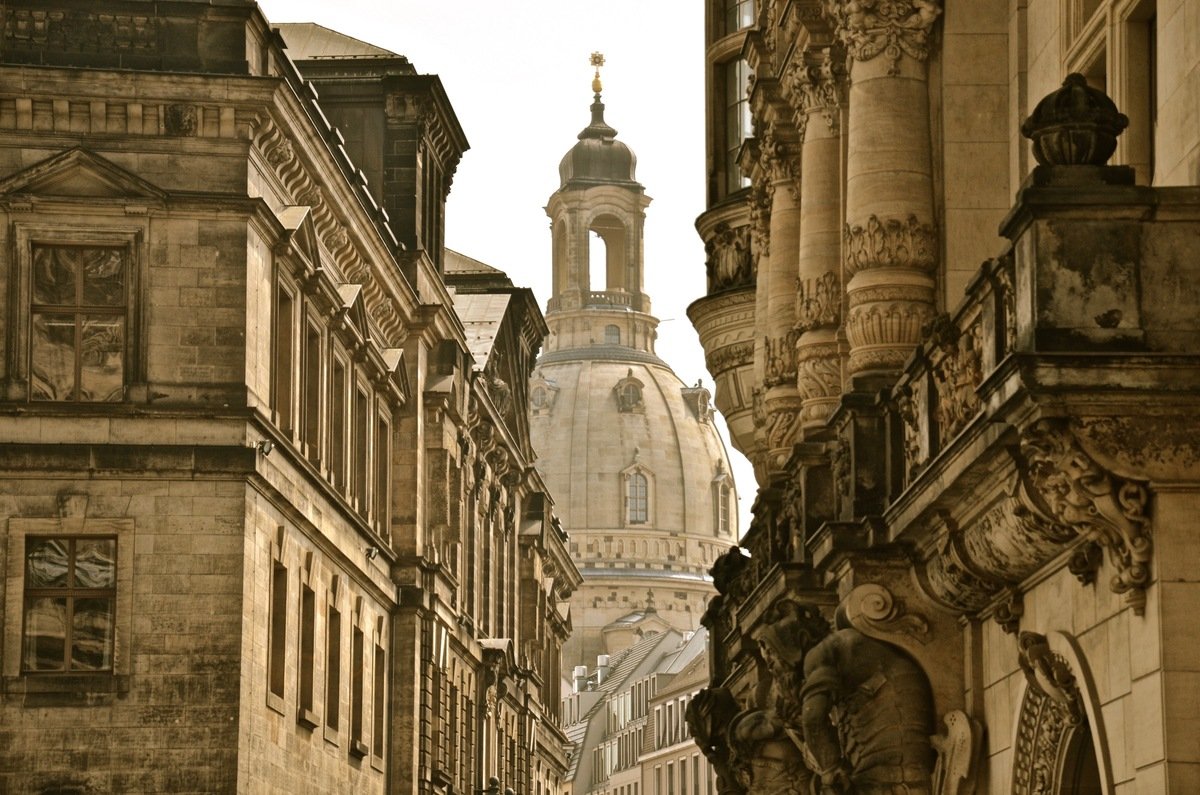
The Zwinger is a building complex with garden facilities in Dresden. The masterpiece of architecture, sculpture and painting, built under the supervision of the architect Matthäus Daniel Pöppelmann and the sculptor Balthasar Permoser, is one of the most important buildings of the Baroque and is, besides the Frauenkirche, Dresden's most famous monument. Its name, Zwinger, dates back to the Middle Ages' customary designation for a fortress between the outer and inner fortress walls, although the Zwinger did not fulfill any function corresponding to the name at the beginning of construction.

From 1709, the Zwinger became an orangerie and garden as well as a representative festive area. Its richly ornamented pavilions and the galleries lined with balustrades, figures and vases testify to the splendor of the reign of Elector Frederick Augustus (also called "August the Strong") and his claim to power. In the original conception of the elector, the Zwinger was intended as the forecourt of a new castle, which was to occupy the square as far as the Elbe; Therefore, the kennel remained unobstructed for the Elbe side (provisionally closed with a wall). The plans for a new castle were abandoned after his death, and with the departure from the Baroque, the Zwinger lost its importance. It was not until more than a century later that the architect Gottfried Semper, with the Sempergalerie, joined him.
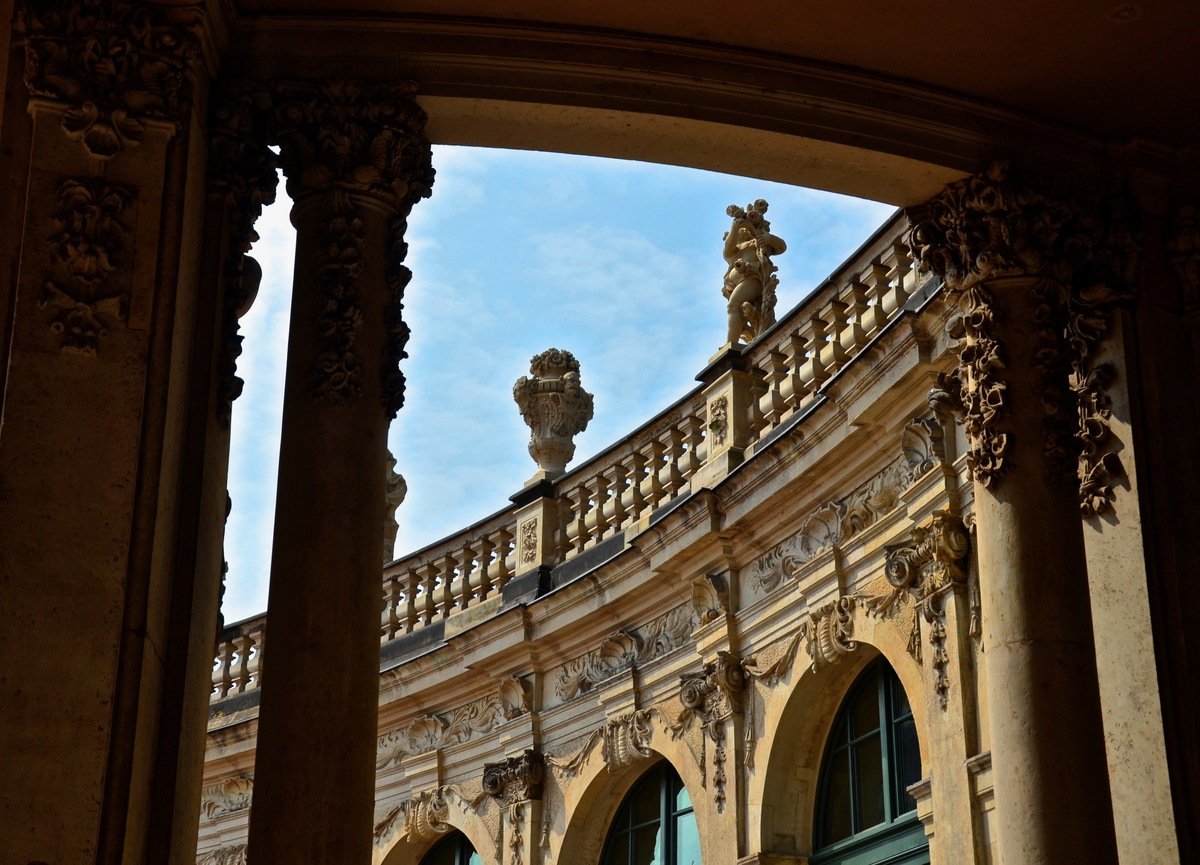
The Nymphenbad is one of the most beautiful baroque wells. Surrounded by a French pavilion, arched gallery, fortress wall as well as a cultivation of the Sempergalerie, it forms an upwardly open, high-walled room with a square base. The Nymphenbad is not a bath in the real sense, rather a water theater or grottenaal. In addition, the design of the side walls with their plastic jewelery reminds of an ancient nymphaeum. Today the Nymphenbad is a comparatively reserved version of the originally intended water games. In the plans for the Zwinger a large ring cascade was planned.
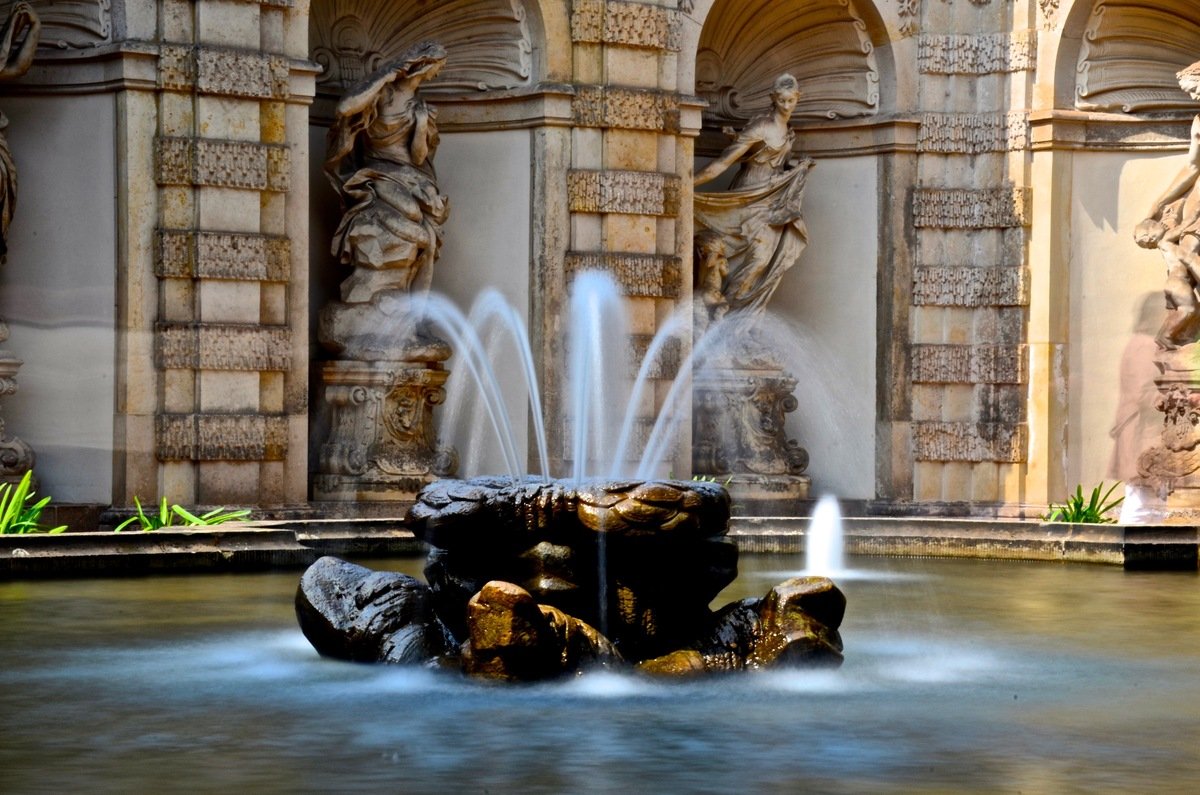
The Stallhof in Dresden belonged to the building complex of the Residenzschloss and served in the 17th century as a playground for large equestrian tournaments. It was completed in 1591 under Elector Christian I and is thus one of the oldest in the original design of the tournaments in the world. Today, the stable is used for cultural events such as the medieval Christmas market. Occasionally, riding tournaments and theatrical events are still held here today.
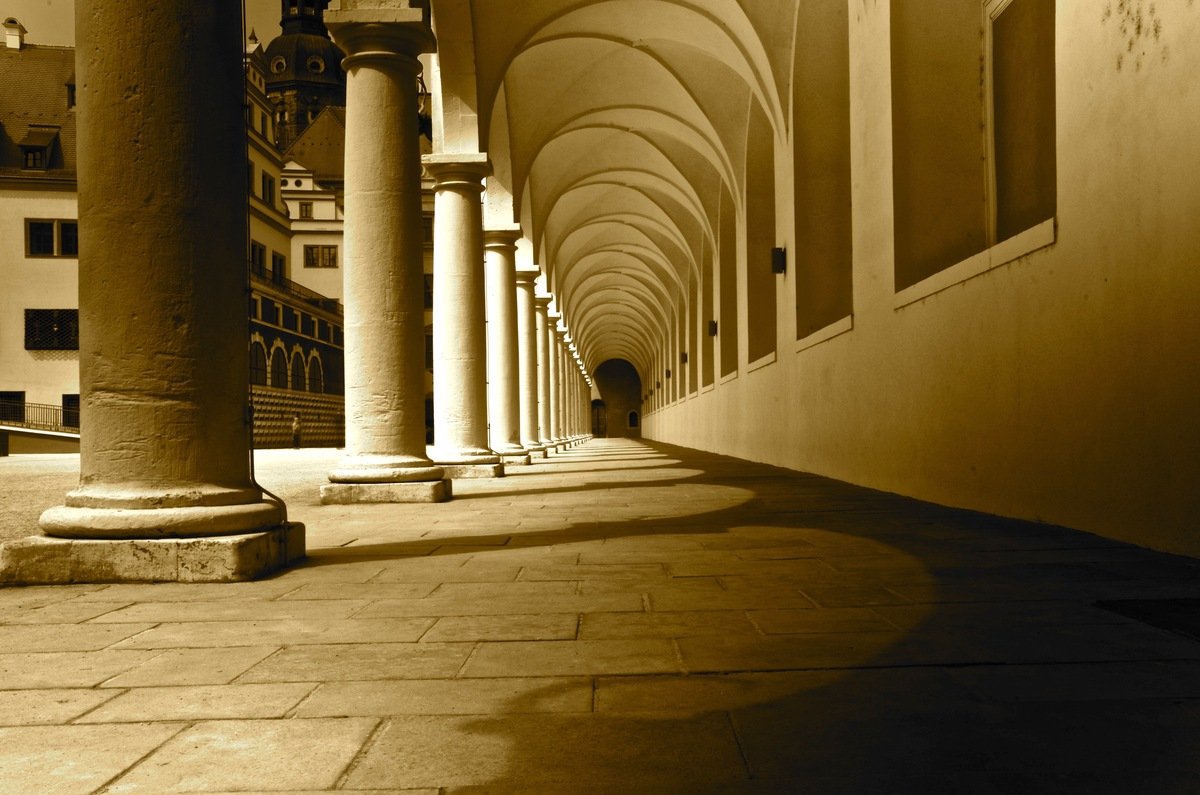
Photos by @HomeArtPictures
Text in parts adopted by https://de.wikipedia.org/wiki/Frauenkirche_Dresden
